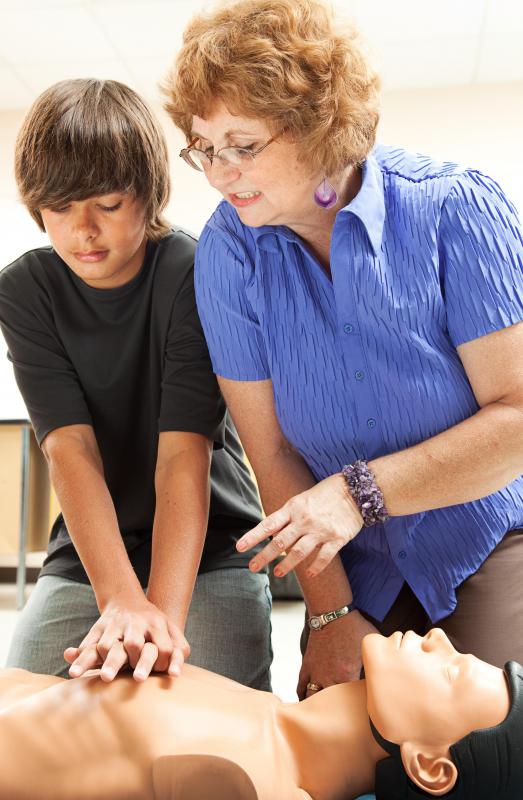At WiseGEEK, we're committed to delivering accurate, trustworthy information. Our expert-authored content is rigorously fact-checked and sourced from credible authorities. Discover how we uphold the highest standards in providing you with reliable knowledge.
What is the Difference Between BLS and CPR?
Basic life support (BLS), in the United States, refers to a conglomerate of necessary medical interventions in the event of a variety of potentially life-threatening injuries and health conditions that can present suddenly, such as a heart attack. Cardiopulmonary resuscitation (CPR), on the other hand, refers strictly to the delivery of a combination of rescue breaths and chest compressions to a patient who is in respiratory and cardiac arrest. The principle difference between BLS and CPR, therefore, lies in the fact that CPR is just one aspect of BLS — specifically for a non-breathing victim who does not have a pulse. A person who knows CPR has not necessarily received BLS training, whereas people who have received certification in BLS are always certified in CPR as well.
Although BLS and CPR are two different things by definition, they are closely connected because CPR itself is BLS. Life cannot be supported if adequate respiration and circulation cease; this is why healthcare providers perform these vital functions artificially for non-breathing patients who do not have a pulse. It might be said that BLS and CPR differ also in the amount of time it takes to train in each. There are at least three levels of CPR training offered in the United States: CPR for the adult; CPR for adults, children and infants; and CPR for the healthcare provider. Only one level of BLS, however, is nationally recognized, and the time it takes to complete the training depends strictly on the schedule that the training institution follows.

Certification in BLS and CPR at the healthcare-provider level is the minimum requirement, as far as training is concerned, to become an emergency medical technician and work on an ambulance. Another detail that might help to define the difference between BLS and CPR is the fact that training in the use of an automated external defibrillator (AED) is always associated with CPR training at the healthcare provider level, not with training in BLS. This is a reminder that CPR is independent of BLS, but BLS is not independent of CPR.

When a person is not breathing and has no pulse, he or she is clinically dead; therefore, CPR should be associated with resuscitation or the revival of a clinically dead person. BLS is life support and is performed to prevent having to resort to CPR in the first place. As soon as CPR has proved to be successful, however, BLS is immediately reimplemented to support that resuscitated life. It might even be said that BLS supports CPR and that CPR supports BLS.
AS FEATURED ON:
AS FEATURED ON:
















Discuss this Article
Post your comments